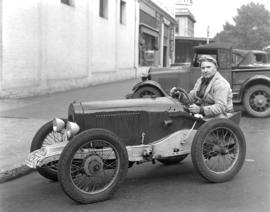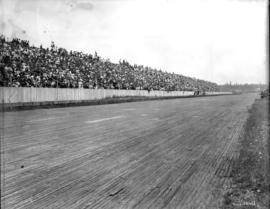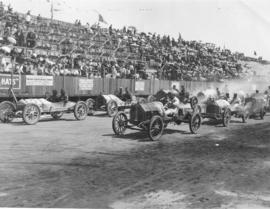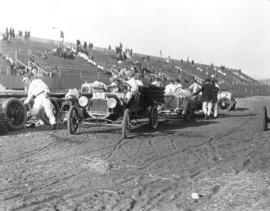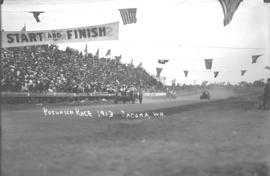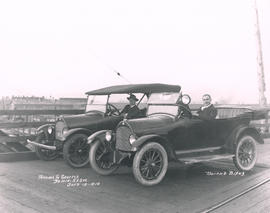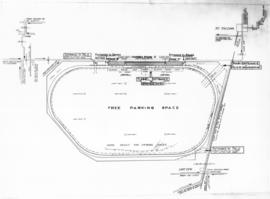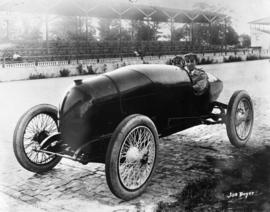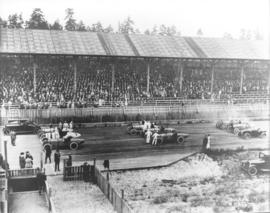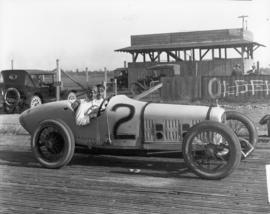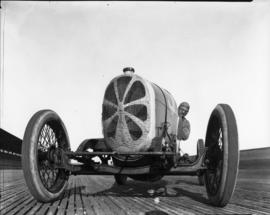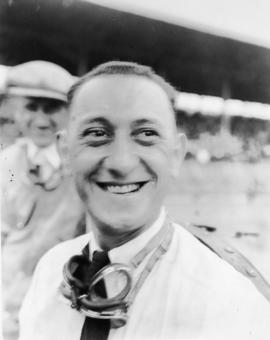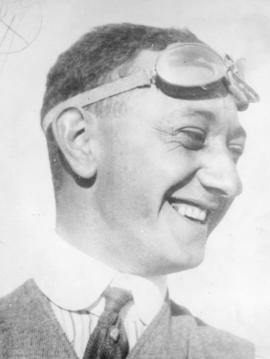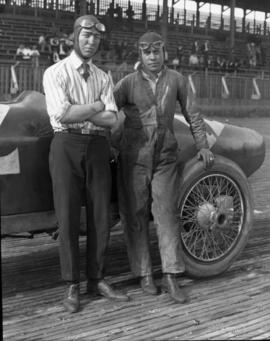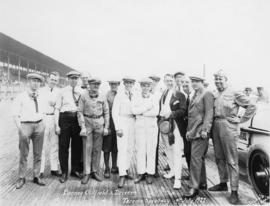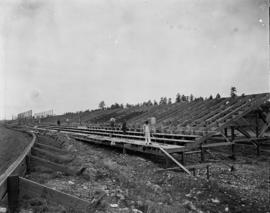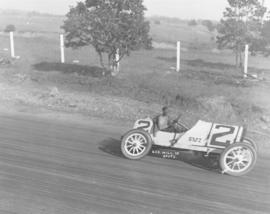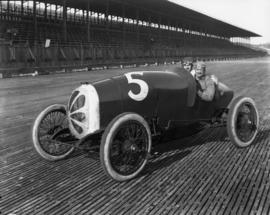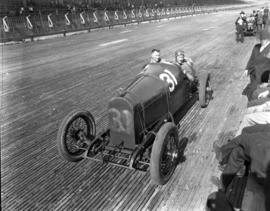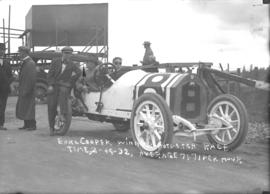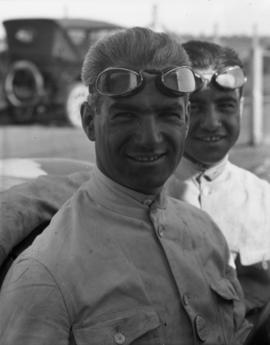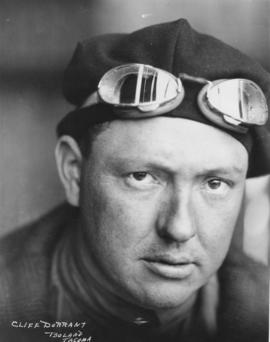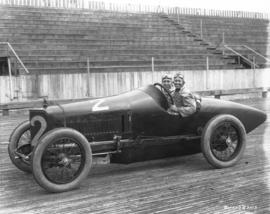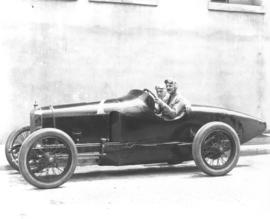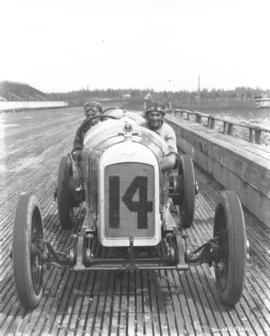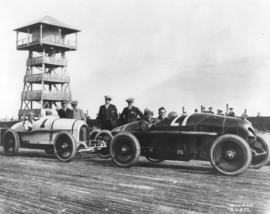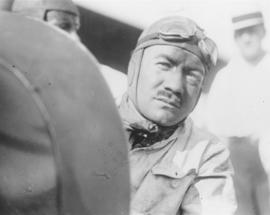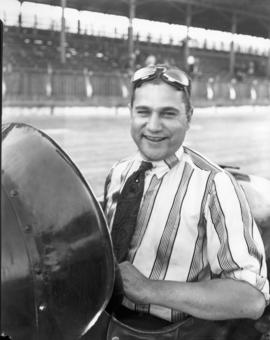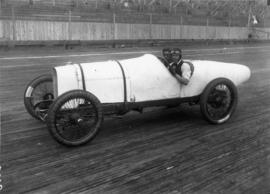Peering over the large steering wheel of his Durant Special is speed king Eddie Hearne, who had traveled to the Tacoma Speedway to race in the eighth annual auto race. Accompanying him on his ride in July of 1919 is his mechanic, Harry Hartz. Mr. Hearne joined his racing colleagues Cliff Durant, Dario Resta, Louis Chevrolet and Ralph Mulford in a one-day-only three-race series held on July 4th. The meet, sponsored by the Tacoma Speedway Association, offered a $15,000 purse for the event, the higher earnings to the winner of the most points in the 40,60, and 80 mile races. Nearly 40,000 fans flocked to the Speedway which saw the grandstands packed to capacity (seating 11,400) and the course lined with cars and field crowds that had taken special trains and buses in order to get there. Although Mr. Hearne did not win any of the races, he did manage to acquire enough points to finish with a $2100 payday. The Frontenac team of Louis Chevrolet and Ralph Mulford swept all three races. (TNT 6-30-19, p.1, 16-article; TNT 7-3-19, p. 1,2-article; TNT 7-5-19, p. 1, 13-results) TPL-1635; G51.1-138
Hearne, Eddie; Hartz, Harry; Tacoma Speedway (Lakewood); Racetracks--Lakewood--1910-1920; Automobile racing--Lakewood--1910-1920; Racing automobiles--1910-1920;
